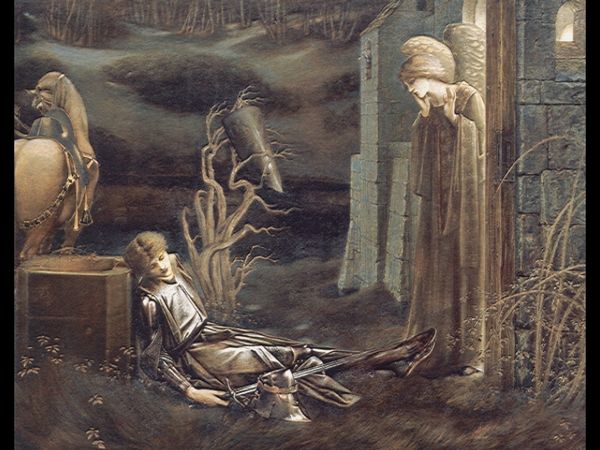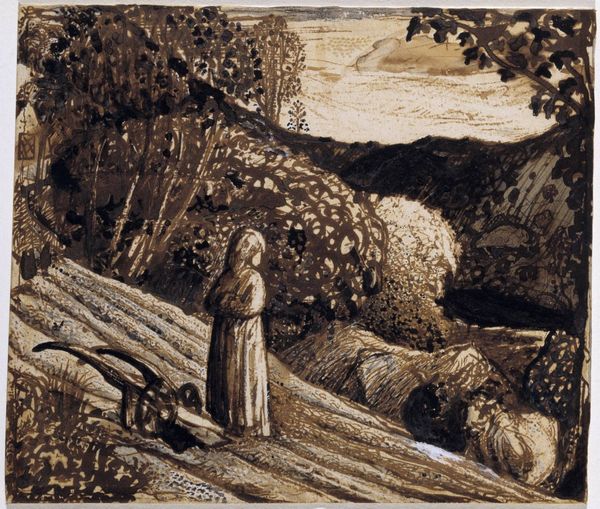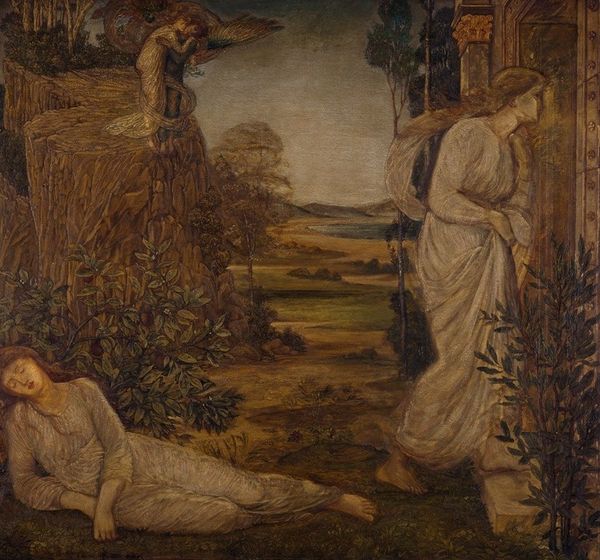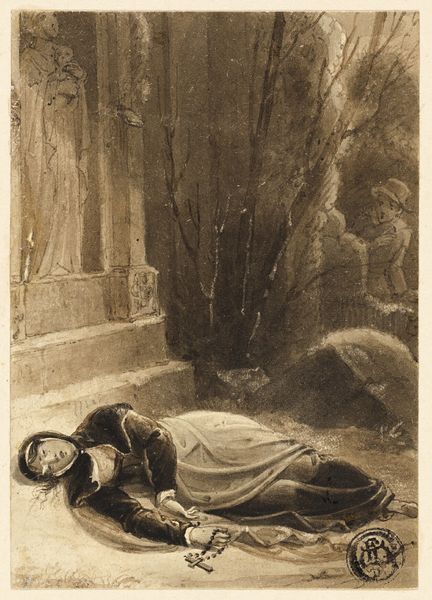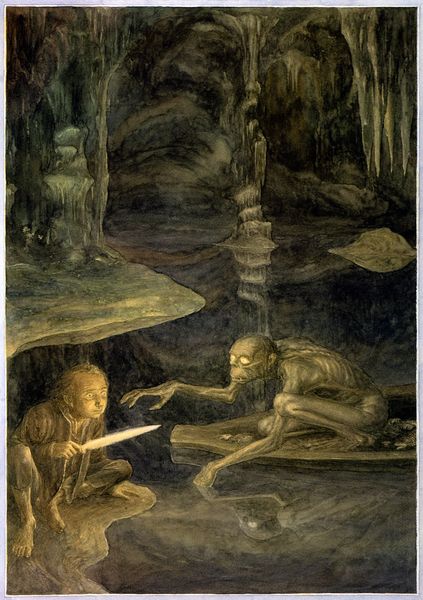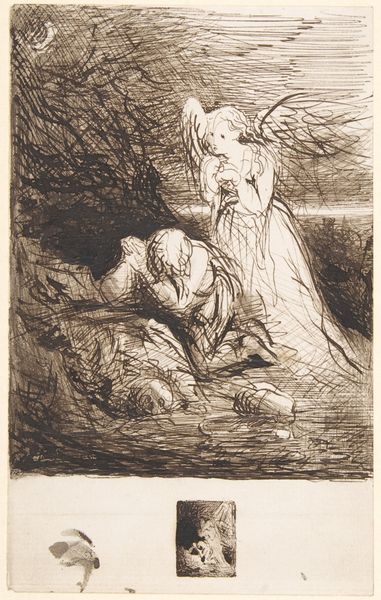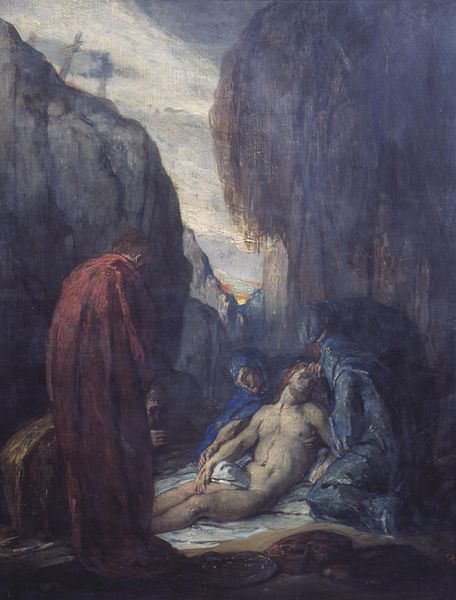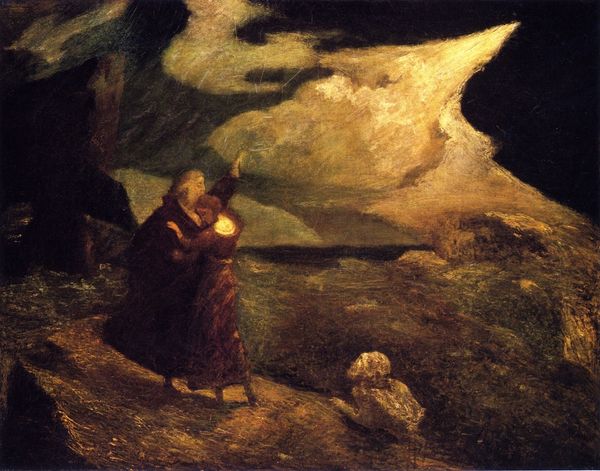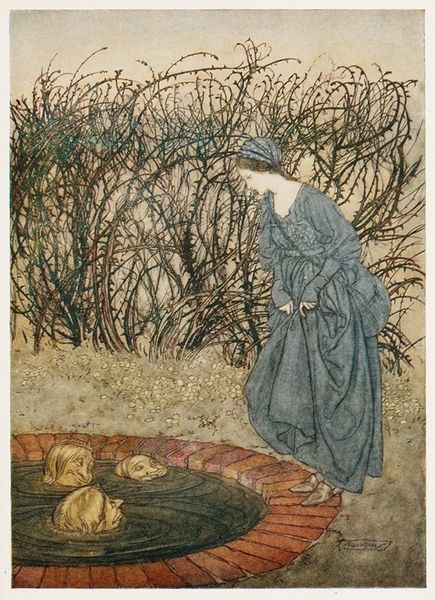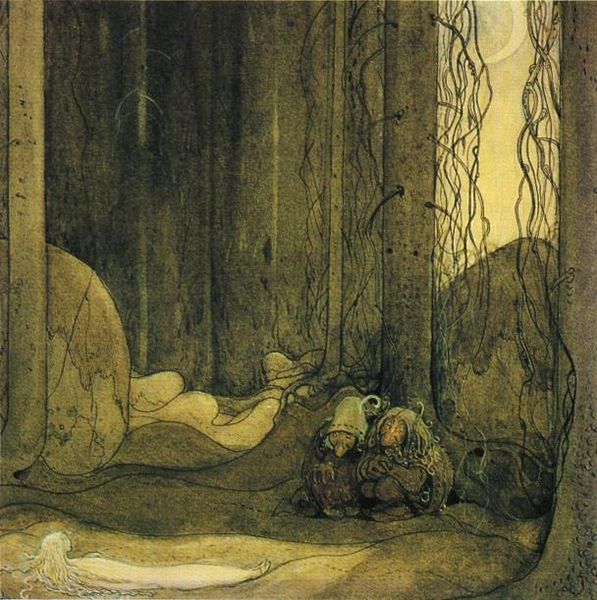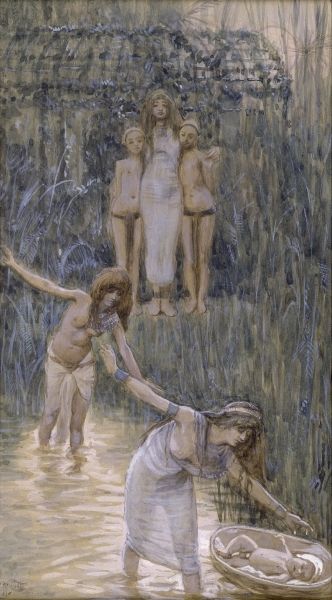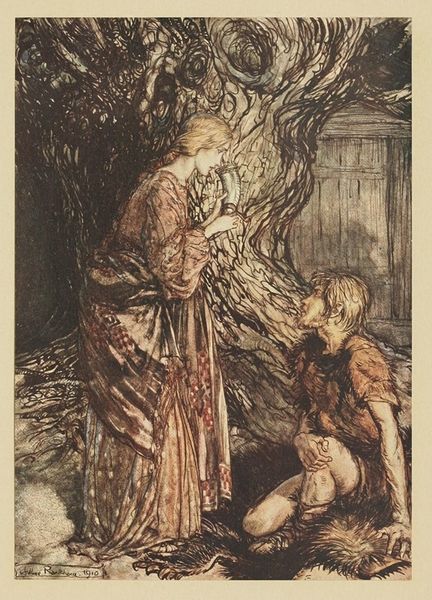
tempera, painting, watercolor
#
gouache
#
narrative-art
#
tempera
#
painting
#
landscape
#
figuration
#
oil painting
#
watercolor
#
sketch
#
romanticism
#
mythology
#
pre-raphaelites
#
watercolor
Dimensions: 100.33 x 124.46 cm
Copyright: Public domain
Editor: Here we have "The Dream of Lancelot (Study)" by Edward Burne-Jones, done in tempera, watercolor, and gouache. The color palette gives off a melancholy, dreamlike atmosphere. How do you interpret this work, considering its connection to Arthurian legend? Curator: The scene pulls us into the intricate web of desire, duty, and spiritual yearning that defined much of Pre-Raphaelite art. Burne-Jones often used Arthurian legends to explore the Victorian era's complex relationship with morality, gender, and the allure of the unattainable. Notice how Lancelot is passively positioned, almost vulnerable, and is being watched over by a golden angel figure. The composition makes one ask whether this symbolizes his inner turmoil or a societal judgment upon his illicit desires? Editor: I see what you mean. It does seem like a commentary on societal expectations and individual longing, especially within the constraints placed on women at the time, mirroring Guinevere's position in the love triangle. The legend definitely highlights their restricted agency. Curator: Precisely. These artists were keen on the use of symbolism that served to comment on power dynamics, both romantic and social. They actively promoted change while revisiting medieval and mythical themes in reaction to modern industrialization. How does the painting’s visual language support or subvert traditional narratives, especially considering the period’s social anxieties around gender roles and female sexuality? Editor: Now that you mention it, the subdued color palette seems to hint at hidden, forbidden love. Perhaps there is something feminist about portraying these vulnerabilities so openly, rather than painting over the reality of human nature. Curator: I would agree. And through art, there can be greater societal changes in seeing such open portrayals. Burne-Jones provides insight into suppressed realities within those gender roles, as you pointed out. Editor: That’s so helpful! It really reshapes my initial reading. Curator: Agreed.
Comments
No comments
Be the first to comment and join the conversation on the ultimate creative platform.
